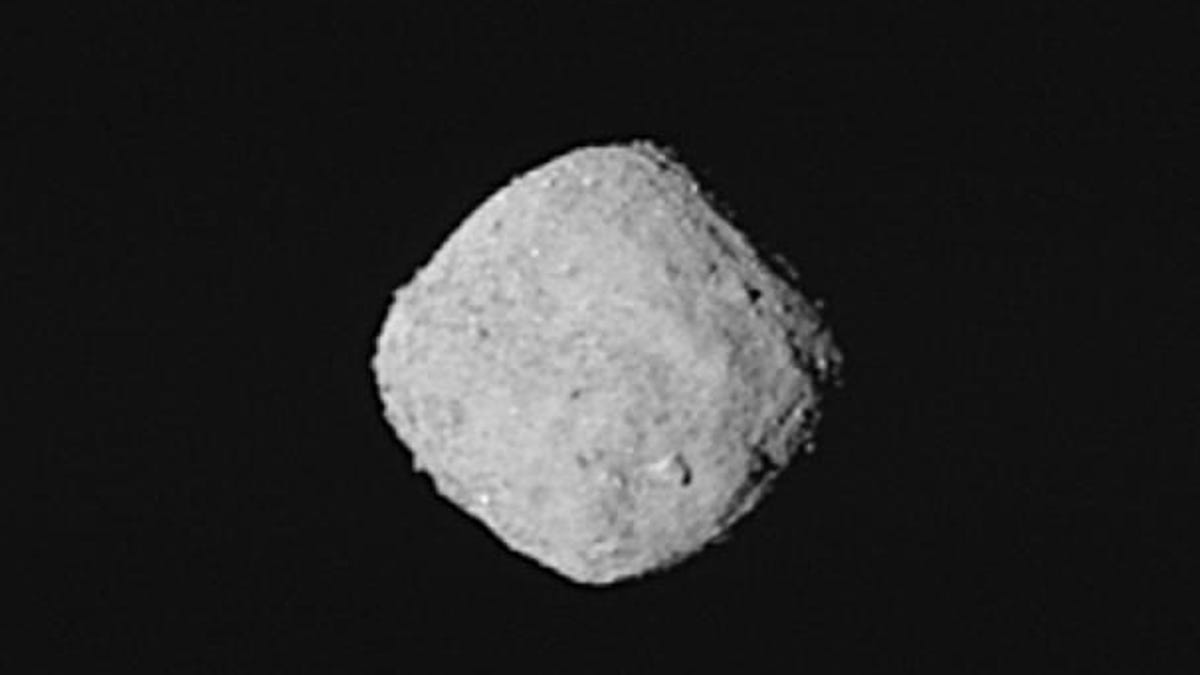NASA gets first good look at asteroid it plans to pickpocket
The OSIRIS-REx spacecraft will soon arrive at the tiny world Bennu.

A composite image of Bennu taken from OSIRIS-REx at a distance of 330 km (205 miles).
NASA's OSIRIS-REx spacecraft is about a month from its destination, the potentially hazardous asteroid Bennu, and can finally get a look at the space rock it plans to steal a chunk of.
An animation of views of Bennu taken during the craft's approach from Oct.12-29.
Turns out that Bennu looks a lot like the diamond-shaped asteroid Ryugu that is currently being visited by the Japanese Hayabusa-2 mission.
"The fact that the Japanese mission has reached its target a little ahead of us turns out to be extremely interesting, as we can now interpret our results and compare to the results obtained by another mission almost on real time," explains Julia de León, a member of the mission's science team from the Instituto de Astrofísica de Canarias, in a release.
OSIRIS-REx was launched over two years ago on Sept. 8, 2016 and is set to arrive at Bennu on Dec. 2. Once there, the spacecraft will spend the better part of a year-and-a-half surveying the asteroid.
The hope is to bring a small piece of the asteroid back Earth in 2023. Once here, the sample from another world will be analyzed down to the atomic level by scientists looking for the building blocks of life.

